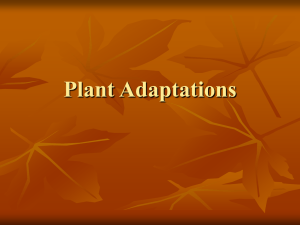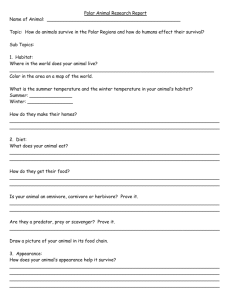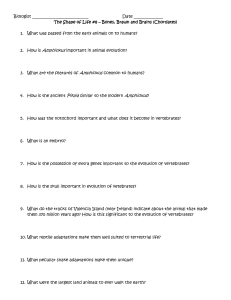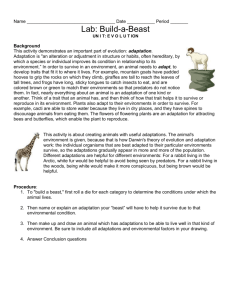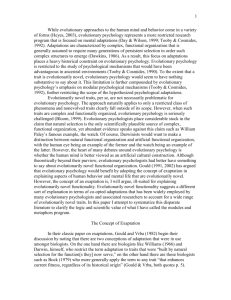Plants – Draw and describe
advertisement
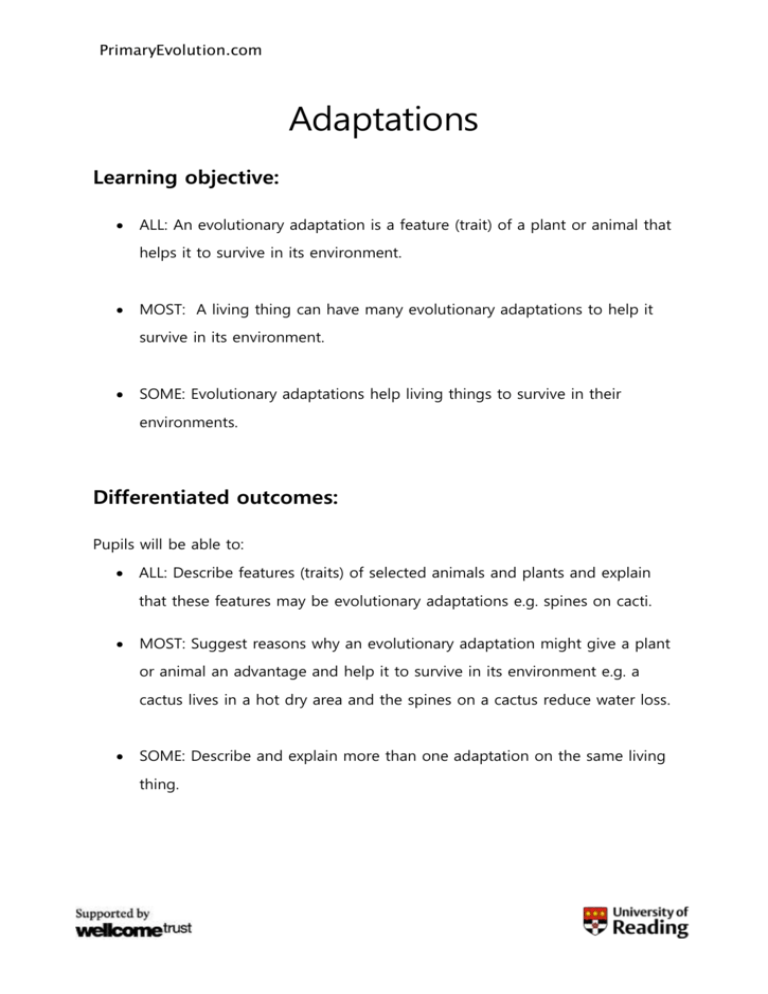
PrimaryEvolution.com Adaptations Learning objective: ALL: An evolutionary adaptation is a feature (trait) of a plant or animal that helps it to survive in its environment. MOST: A living thing can have many evolutionary adaptations to help it survive in its environment. SOME: Evolutionary adaptations help living things to survive in their environments. Differentiated outcomes: Pupils will be able to: ALL: Describe features (traits) of selected animals and plants and explain that these features may be evolutionary adaptations e.g. spines on cacti. MOST: Suggest reasons why an evolutionary adaptation might give a plant or animal an advantage and help it to survive in its environment e.g. a cactus lives in a hot dry area and the spines on a cactus reduce water loss. SOME: Describe and explain more than one adaptation on the same living thing. PrimaryEvolution.com Prior learning/ lesson in context: Animals and plants are suited to their environments. The features (traits) that mean they are suited to their environment are known as evolutionary adaptations. These adaptations can be physical such as spines or beak shape; they can also be behavioural such as alarm calls or responses to certain things such as predators. This activity will develop scientific enquiry skills as required by the National Curriculum. Pupils will be able to: Raise and try to find an answer to questions e.g. why does the cactus have spines? Use simple information sources (succulent cards) to draw conclusions in real life (the cactus they are drawing and labelling). Activity 1 – Show some pictures of animals and explain how certain evolutionary adaptations help them to survive. After a few examples, ask the class whether they can notice any evolutionary adaptations that they themselves have. Encourage them to explain why the adaptations give them an advantage. Activity 2 – You will need actual cacti to do this! Place cacti on each table or within view of each student. Warn the children not to touch them, as they can be painful and spiky! Children will draw the cactus on their table with as much detail as possible and describe what they notice. They will then label parts of the plant which they think are evolutionary adaptations and suggest reasons why the adaptation means the plant is suited to living in its environment. Plenary: PrimaryEvolution.com Bring the children together in front of one of the cacti and ask them to share their ideas about the evolutionary adaptations they noticed. Then see if they can give examples of other living things and their evolutionary adaptations. PrimaryEvolution.com Adaptations – Drawing and describing Name: Date: ________________________________________________________________ _____________________________ PrimaryEvolution.com
